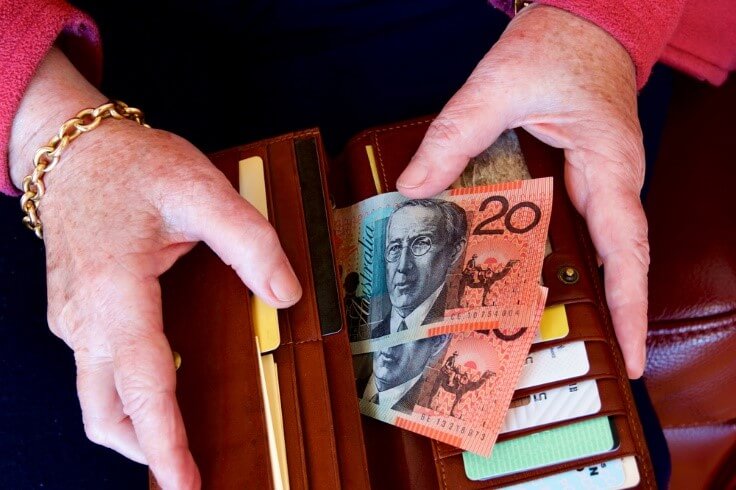
While a first glance of the latest Consumer Price Index (CPI) figures may indicate that the inflation genie is going back in the bottle, Compare the Market’s Economic Director, David Koch, says the new data from the Australian Bureau of Statistics (ABS) data indicate some key areas that are still hurting households – electricity prices, insurance and health costs.
“Many Australians will be seeing that inflation rose just 0.6% to 4.1% in the latest quarter – which is lower than the previous quarter’s 1.2% hike and the smallest we’ve seen since March 2021.
“But here is the important part. The RBA expected this annual trimmed mean figure at the end of 2023 to be 4.5 per cent. So, Wednesday’s figure came in better than the actual RBA prediction. They have to be happy with that.
“However, there are still some key areas that are continuing to hurt the hip pocket,” Mr Koch said. “Electricity costs, health costs and insurance aren’t really things Aussie households can avoid, so while it’s great to see some areas like education, transport and household equipment come down, the reality is most Aussies are still going to be feeling the pinch with some everyday costs.”
Electricity prices are rising despite falling wholesale prices
In the December quarter, electricity prices rose 1.4%, while we’ve been stung with a 6.9% increase over the last 12 months.
According to Koch, wholesale prices account for just a third of your total electricity bill.
“A lot of Aussies will be seeing those wholesale prices drop quite significantly and wonder why retail prices and the CPI data around electricity costs continue to go up,” Mr Koch said.
“It’s important to note that in addition to wholesale prices, the price you ultimately pay for electricity is determined by distributor costs to transport and distribute electricity to your household, environmental costs involved with revamping the grid to make it more environmentally friendly, bulk buying of electricity, which typically occurs ahead of time and takes a while to be reflected in retail costs, as well as the day-to-day costs incurred by retailers, such as operational costs, service fees, marketing and the maintenance of meters.”
Insurance premiums show no signs of slowing down
Perhaps one of the biggest increases over the last 12 months was insurance costs. They’re up 16.2%, which the ABS has called the biggest annual increase in 23 years.
“You just have to look at the wild weather events we’re experiencing across the nation to understand why insurance costs continue to rise at rapid rates,” Mr Koch said.
“What we’re noticing is Australians who haven’t even been directly impacted by natural disasters seeing an increase to their premiums.
“Unfortunately, these wild weather events increase the risk of claims being made to insurers, so they typically up prices for everyone. As we’ve heard time and time again, it’s simply costing more to rebuild or repair damaged homes and cars, labour costs have increased, we’ve seen supply chain issues – all these factors are keeping insurance costs high.”
Health costs are a mixed bag
According to the data, health group costs increased by 5.1% over the past 12 months, with medical and hospital services up 6.5% in the same time frame. According to Koch, Australians with private health insurance should brace for further rate hikes this year.
“We’re expecting the government to announce health insurance rate hikes for 2024 any day now,” Mr Koch said. “Industry experts predict the 2024 rate rise will be the biggest in years, with most health funds expected to pass costs onto consumers on 1 April.
“A hike could mean some Australians end up paying hundreds of dollars more for their health insurance. We encourage customers not to take these hits lying down.”
But it could be good news for the next RBA rate announcement
While the price of most goods and services continues to increase, data from the ABS show that annual CPI inflation data has dropped 3.7% from the peak of 7.8% in December 2022.
“Australia’s inflation retreat should be music to homeowners’ ears,” Mr Koch said. “With CPI at 4.1%, it’s very unlikely the Board will increase the cash rate next Tuesday.
“The question now is when will they cut the cash rate? My guess is that it won’t be until the second half of this year.
“I reckon the Reserve Bank will be extra careful to make sure the genie is well and truly back in the bottle, and there’s no chance of it coming out again.”
For more information, please contact:
Phillip Portman | 0437 384 471 | [email protected]
Compare the Market is a comparison service that takes the hard work out of shopping around. We make it Simples for Australians to quickly and easily compare and buy insurance, energy, and home loans products from a range of providers. Our easy-to-use comparison tool helps you look for a range of products that may suit your needs and benefit your back pocket.








